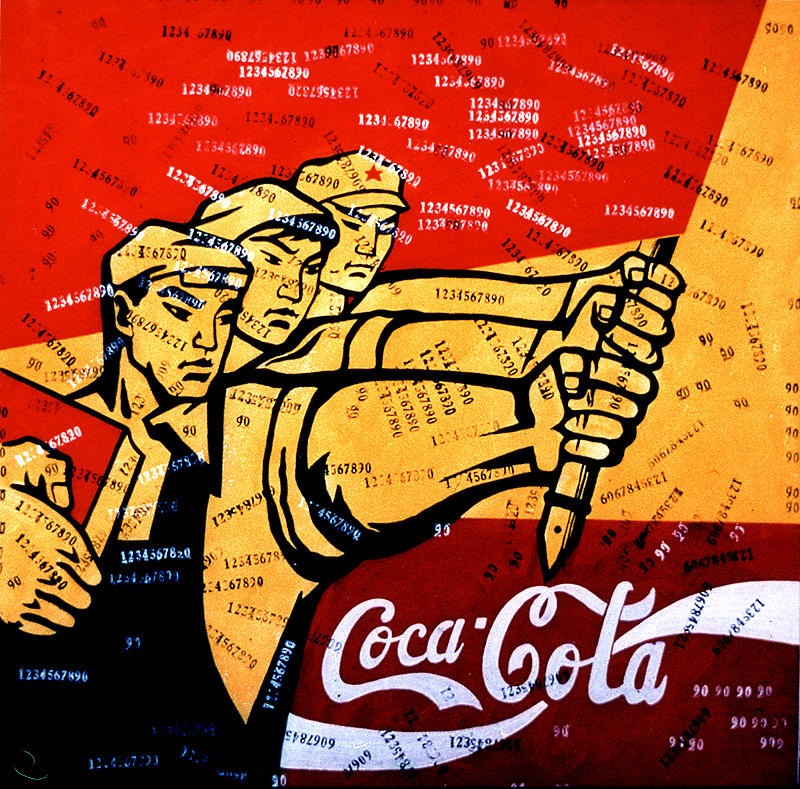The artist that I'n comparing with Wang Guangyi and emerging, contemporary photographer, Wang Ningde was born in Liaoning Province, China in 1972. His life is book-ended by two of the most tumultuous periods in China's recent history: he grew up in the 1970's as China opened its borders to a flood of imported goods and ideas, and today he works in an environment of unprecedented economic and cultural growth. He is a prominent figure among a generation of impressive young Chinese photographers. In his hauntingly striking black and white photographs, he captures the tension between an ever-changing contemporary China and the always-present memory of the Cultural Revolution.
Wang Guanyi's work, Great castigation series, a group of People's volunteer army aligned in a standing in position, raising up the red book, the book that the former Chinese cult, Mao Ze Dong wrote. A strip U.S drink -Coca cola is painted across the canvas.This one the artistic strategy produces imagery on different levels, both symbolic and real, visualizing and actively counteracting key economic paradigms and their social and cultural implication. Guanyi treads a very delicate line between moral dictum and capitalist endorsement; the interpretation of his paintings alternates with the subjectivity of contect. Amalgamating, confusing, and blurring opposing ideological beliefs, Guanyi billboard sized canvases readily sell out national spirit, while simultaneously devaluing status symobol luxury for the proletetariat.
Both artist juxtaposition of the past versus present. In Guanyi's work he juxtapose the military icons from the cultural revolution. In Ningde's work, he contrasted the rigidness and oldfashion clothes that the little boys are wearing. Young, children boys are lined up in pairs in perfect rows. It compares the contemporary "ideal" life that the modern chinese are living in with the rigid, oppressed behaviour. There is an irony to this. How the Chinese are developing but yet their demaneour are suppressed.
The colours differ from each other. While Guanyi uses bright, vibrant colours which includes red, yellow, and electric blue, Ning de uses a monochrome, monotonous black and white to depict most of his photographs in the series. Guanyi presesents the subject matters in a pop art manner where details are limited and shadows are highlighted. Colours are also flat. However in Ningde's work, the tones are varied while colours are limited. Using photography, the subjects are depicted in a realistic manner.
Wang Ningde does not present a confirmed form nor provide a clear present of the reality in "One Day". All he represents is merely an absolute world of reality existing between the reality and memory. Although the clothes in that world may be old-fashioned, but the imaginations and dreams that world has born is infinite. Looking at his photographs, what we can share is not his experiences, is only his consciousness of time, his point of view of the world, his attitude towards life, and his imaginations.


No comments:
Post a Comment